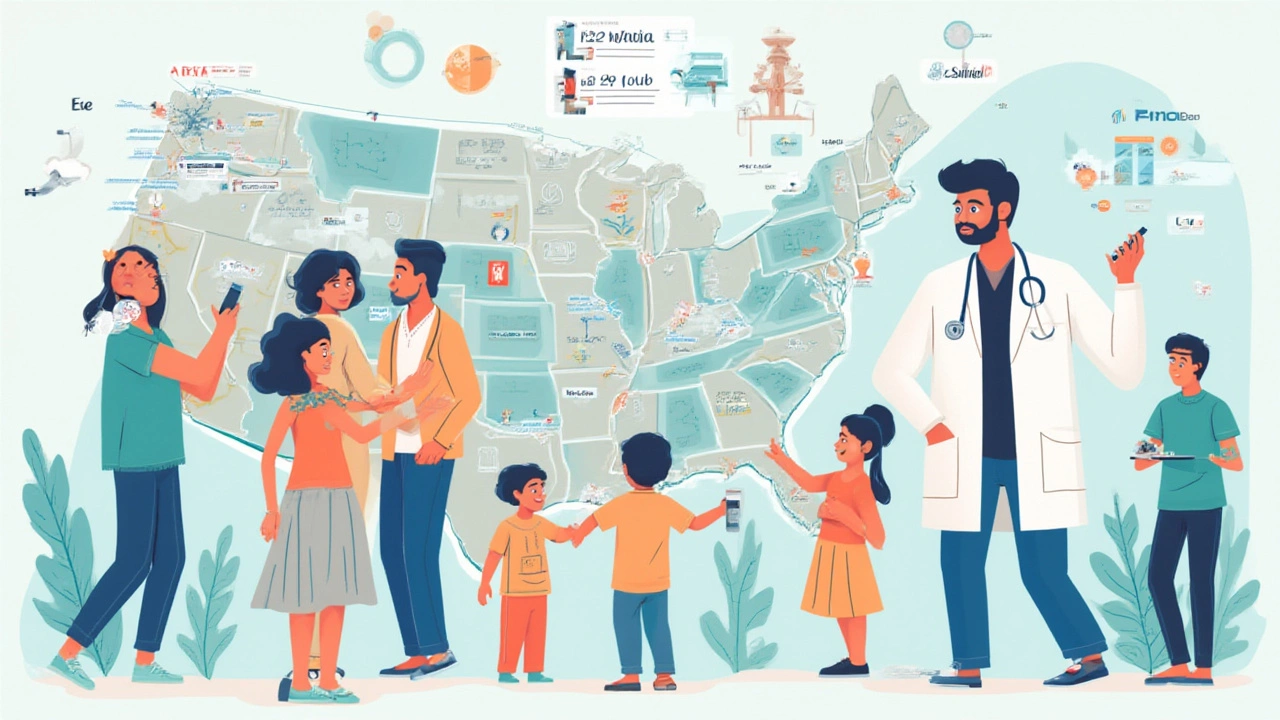Picture this: Someone suffers a medical emergency, and every minute counts. Where in the US would you want to be for the best chance at a positive outcome? Spoiler alert—Minnesota isn’t just known for its lakes and freezing winters; it keeps topping the charts as the state with the best health care system in the country. This title isn’t random or just a matter of one good hospital—Minnesota’s dominance comes down to a crafty mix of access, affordability, and dazzling quality. Other states try to catch up, but year after year, this northern gem keeps its crown. So why is Minnesota so good at this game, and how do the rankings even work? Here’s everything you never realized you needed to know about what state is ranked #1 in health care and what exactly puts it ahead of the pack.
How US States Are Ranked for Health Care
Measuring health care isn’t as simple as just counting fancy hospitals or looking at a few patient reviews on Google. Every year, trusted organizations like U.S. News & World Report, the Commonwealth Fund, and WalletHub analyze a mountain of real data before handing out the coveted top spot. The process is serious business—think thousands of numbers, surveys, and detailed comparisons, not just a popularity poll.
What’s in the recipe? The rankings stew together factors like:
- Access: How easy is it to get appointments? Are doctors nearby, or is the nearest specialist a two-day road trip away?
- Quality: How do hospitals perform on life-or-death measures? Are infections rare? Success after surgery?
- Cost: Does a simple doctor visit burn a hole in your wallet? Is health insurance actually affordable?
- Public health: What’s the vaccination rate? How many folks live with chronic disease? Habits like smoking or binge drinking?
Take the 2024 U.S. News ranking (which heavily influenced the 2025 buzz). Minnesota clinched the first place thanks to reliable access, top hospitals, amazing health outcomes, and insurance plans that don’t leave people bankrupt. For several years, Massachusetts and Connecticut put up a good fight and sometimes swap places with Minnesota, but nothing seems to knock it off the top for long. It’s not about having a single superstar hospital—the state’s entire system works like clockwork.
One big surprise is that some traditionally wealthy states don’t even crack the top ten. California may have Silicon Valley money, but its diversity and population size come with tough logistical hurdles for health care. Meanwhile, places like Hawaii and Vermont pop up as unexpected top performers—strong public health systems, high insurance coverage, and coordinated preventive care earn them bonus points.
If you want to take a close look at what matters for ranking, here’s the mix U.S. News used in their recent analysis:
- Health care access (insurance rates, preventive care, mental health care)
- Health care quality (hospital readmission rates, preventable hospital visits, patient experience)
- Public health (obesity, smoking, physical wellbeing)
States scoring high in all areas, like Minnesota, show off balanced systems—not just flashy hospitals or tech, but real-world results and accessibility for everyday folks.

What Sets Minnesota Apart in Health Care
Minnesota’s secret sauce starts with old-fashioned teamwork, but there’s more going on than meets the eye. First off, the state has an unusually high rate of health insurance. Over 95% of Minnesotans are covered, so nobody’s left out in the cold when they need medical help. The state put in serious work over decades to get nearly every resident insured, whether through jobs, government plans, or smart subsidy programs. That’s no small feat, considering US national averages lag behind—16 other states don’t even hit a 90% coverage rate.
Hospital quality here is the stuff of legends. The Mayo Clinic in Rochester isn’t just a Minnesota claim to fame—it’s constantly named the #1 hospital in the world. But it’s not alone; the state’s health care network includes mid-sized and small facilities where patients still get world-class care, without the chaos you see in bigger cities. Hospital infection rates are low, staff training is prioritized, and patients usually report actually feeling listened to instead of rushed out the door.
The focus on preventive care is another game-changer. Minnesotans get more regular screenings, checkups, and flu shots than elsewhere. The logic is simple: stop health issues before they turn into hospital visits. This means less strain on hospitals, lower costs for everyone, and a generally healthier population. Combine that with wide access to mental health care (which is patchy almost everywhere else in the US), and you see why folks here live longer, too.
Cost is a massive topic in health care, and Minnesota somehow manages to make it less scary. Insurance is more affordable for most people, and surprise billing isn’t rampant. The state government keeps a close eye on health care spending, and there’s a culture of transparency—no mystery medical fees lurking at the bottom of your bill.
Even the tiny details add up. The air and water are cleaner. Smoking rates are lower. Communities are built for walking, biking, and outdoor sports, which does wonders for prevention. Schools put real effort into health education and offering nutritious meals. The safety net goes beyond just medical care—food security, housing initiatives, and social programs boost community health.
All of these moving pieces combine to make Minnesota a place where people don’t just live longer—they usually enjoy more years in good health. It’s not perfect—like anywhere, there are racial and economic gaps to tackle. But as a holistic package, no other state keeps outperforming quite like this one. If you want the best shot at top-quality best health care state living, this is where you’re most likely to find it.

Tips: How Other States and Countries Can Learn from the #1 State
This isn’t just trivia—figuring out what makes the top health care state tick can actually help you, whether you're shopping for insurance, trying to improve a local hospital, or even making big decisions on where to live next. The reality is, most places aren’t Minnesota, but there’s plenty to learn from their approach.
First tip: Fight for coverage for everyone. The closer a region gets to universal insurance, the better the health outcomes. Having a safety net means people don’t skip care, catch problems earlier, and avoid pricey emergencies. Even if you’re not in Minnesota, pushing for local health programs, supporting community clinics, and voting for policy that expands access all help.
Invest in preventive care like your life depends on it—because for many, it does. Routine screenings, vaccines, and early checkups save money, stress, and years of life. Whether it’s your school, workplace, or community group, make prevention easy and routine. And don’t skip your own annual checkup thinking you’ll “deal with it later.”
Pay attention to hospital safety metrics. Waiting times, readmission rates, and infection stats are public information in the US—use them to make smart choices about where you seek care. Even something as simple as asking what systems your hospital or doctor has in place to handle emergencies can tell you plenty.
Create community support, not just at the clinic but everywhere. Minnesota’s big health advantages come from healthier lifestyles. Local leaders who push for clean parks, food security, and accessible gyms make it that much easier for residents to stay out of hospitals. If your city or village doesn’t have safe places to walk or bike, start small with community events or pressure local councils for better public spaces.
Lastly, transparency in cost. It’s not glamorous, but one reason Minnesota stays ahead is because people don’t get stuck with surprise bills. Push for clear price tags on services and don’t be afraid to ask for itemized bills or breakdowns when you seek care. Healthcare doesn’t get better in the dark.
If you live outside the US, some of these lessons still stick. Whether you’re in Europe, Asia, or right here in Bangalore with me, systems that combine wide insurance, aggressive prevention, and a dash of community spirit always seem a step ahead. Minnesota didn’t strike gold overnight—it took decades, strong policies, and public buy-in. But that means any place, with some effort and creativity, can move up the rankings. So, if you’re in the mood for the best health care the US has to offer, remember—the Land of 10,000 Lakes isn’t just for fishing. Sometimes, it just might save your life.
